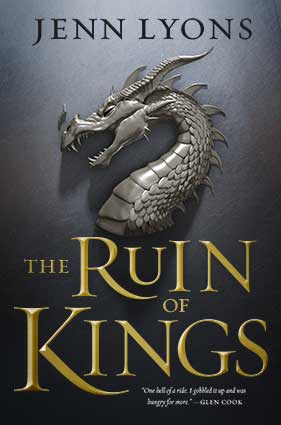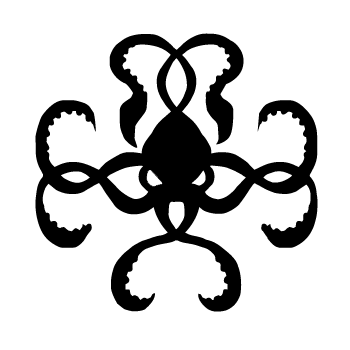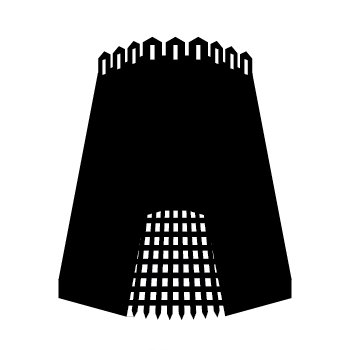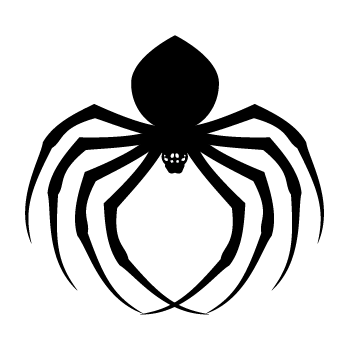 A bastard son and the demons who want his fractured soul. A weapon that can slay gods and the men who will kill to get it. Discover the vast world of abandoned immortality, divine emperors, dragons, and sea witches in The Ruin of Kings by Jenn Lyons. Join us as we explore this fascinating new world, and sign up for exclusive emails for even more behind-the-scenes details! Plus, don’t forget to check out the cover reveal on the B&N Sci-Fi and Fantasy Blog, and the first excerpt on Tor.com.
A bastard son and the demons who want his fractured soul. A weapon that can slay gods and the men who will kill to get it. Discover the vast world of abandoned immortality, divine emperors, dragons, and sea witches in The Ruin of Kings by Jenn Lyons. Join us as we explore this fascinating new world, and sign up for exclusive emails for even more behind-the-scenes details! Plus, don’t forget to check out the cover reveal on the B&N Sci-Fi and Fantasy Blog, and the first excerpt on Tor.com.
The Court of Gems: Royal Houses of the Great Empire of Quur
An Essay by Thurvishar D’Lorus
“In typical fashion, the royal houses of Quur turned what was meant to be a curse into a mark of prestige, to the point that when the original eight houses expanded into twelve, the extra royal houses invented false god-touched colorations to mark their status. Of course, very few in the modern day could claim to know why the houses were cursed in the first place.”
An Uncensored History of Quur, by Raverí D’Lorus1
To understand the Royal Houses of Quur, one must first understand the relationship of the Eight Immortals to the Empire. No matter how many gods might be worshiped in Quur, the Eight have always had place of prestige, because it was the Eight who first put the sword Urthaenriel into the hands of the first emperor, Simillion, and ordered him to slay the God-King Ghauras. Simillion raised temples in honor of the Eight and laid flowers on their altars, certain of their support as he wooed the God-Queen Dana and added her kingdom of Eamithon to the fledgling nation. He piled on success after success: robbing the hoard of the dragon Baelosh to fill Quur’s coffers; marching against the crumbling but still formidable empire of Laragraen and slaying its hated God-King, Nemesan. Quur transformed from a insignificant city-state to a rapidly expanding, vital empire, almost overnight.
And for this, the ruling families of Quur thanked him with knives.2
Furious at losing their chosen one, the Eight Immortals slapped the families with a curse: from that day forward, no legal member of any of the families could rule. They would make no laws, collect no tithes or tribute, hold no land they had not bought and paid for. Any family who defied these laws would be destroyed, utterly. Each house was marked by the color of their eyes, so their identities would always be known, down through their descendants.
There was one single exception.
The Eight Immortals told the Houses that they could chose Simillion’s replacement from among their number. That person would be Emperor, and continue Simillion’s work. When that Emperor died, the families would be allowed to again choose another replacement, as it would never be an inherited position. Every family would be royal and no family would be royal.3
Naturally, faced with the prospect of gaining the only remaining possibility of real power – the families fought for it. The winner of that short but bloody first contest was Nerikan D’Talus, who promptly left with Urthaenriel and an army to deal with the God-King Ynis, who had (poorly) chosen that moment to invade Quur.
And that left, proverbially speaking, no one minding the store. The Royal Houses were forbidden to rule, but delegates and visitors from Laragraen and Eamithon were arriving daily with tribute that the families didn’t dare accept. In the end, they found a loophole in the wording of ‘legal members’ of the family. If legal family members were forbidden, then unacknowledged bastards of the house were surely more acceptable. Each house gathered their illegitimate children together (apparently the Royal Houses have always been libidinous)4 and told these Ogenra that they, with their own ‘voice’ and not that of any house, could chose among their number who they wished to form a ruling council. That council, again, not chosen by any of the Royal Houses, would manage the Empire during the Emperor’s absence. Eventually this evolved into the system we have today, as each family casts their votes to elect new Voices based on a sliding scale determined by ranking, and the Council self-selects new members from this pool of candidates. The Voices, technically not affiliated with any Royal House, in reality are always kept well lubricated with the metal of politics and ready to further the interests of their sponsoring House.
Of course, this might have all fallen apart if Emperor Nerikan had objected to the idea. For whatever reason, whether a sense of old loyalty to House D’Talus or because he thought it freed up more time for him to hunt god-kings, he let the situation stand, as it has to this day.
So what of the Royal Houses then? What does one do with a group of magically adept, highly-educated, extremely rich elite who suddenly had a lot of time on their hands? They couldn’t rule, but they could pay for lands and services. They could trade.
The Royal Houses became merchants, bartering not anything so prosaic as spices or lumber (at least not in the beginning) but their magical skill. It didn’t take long before each House controlled a monopoly of services and commodities unrivaled anywhere else in the world. Much of the goods and services sold anywhere in the empire pass through Royal House hands in some fashion, from D’Aramarin control of the gatestones to D’Evelin brewing companies. Eventually they added more houses, four more bringing the total to twelve; even most royals would be hard pressed to tell which houses are ‘god-touched’ and which ones used magic to fake their semi-divine status.
But not everyone was content with the Royal Houses’ ‘freedom from the responsibility of rule.’ The Affair of the Voices, led by Gadrith D’Lorus and Pedron D’Mon, nearly resulted in the extinction of both families. (See: The Twisted Ambition, by Killean Solit.)5 While that is the most recent scandal to plague the Royal Houses, it is by no means the only one, nor will it be the last.
The Royal Houses may not rule Quur, but they unarguably control it.6
- Thurvishar, delete this. You cannot open your essay with an excerpt from a banned book, not even one written by your mother. ESPECIALLY not one written by your mother. —Cedric
- Don’t make an assertion like this without defending it with actual evidence. Where are your citations? My gods, boy, what books have you been reading? Is this what they’re teaching at the Academy? I’m going to have a word with your professors!
- Remove ‘and no family would be royal.’
- Remove the judgmental slam on house fertility.
- Would you stop citing banned books? I know Twisted Ambition is banned: I BANNED IT. Also, do you think it wise to remind people of my son Gadrith’s treason? I know you think it funny, but we have House honor to consider.
- Tell me you haven’t shown this to anyone. This is disgraceful. Re-write this with a proper bibliography and citations. And stop making it sound like you aren’t loyal to the House.
The Royal Houses of Quur

House D’Aramarin
Gem: Emerald
Heraldic Device: Kraken
Eyes: Green
Monopoly: The Gatekeepers. Transportation and teleportation.

House D’Erinwa
Gem: Jacinth
Heraldic Device: Elephant
Eyes: Amber
Monopoly: The Octagon. Slavery, private mercenaries.

House D’Talus
Gem: Ruby
Heraldic Device: Lion
Eyes: Red
Monopoly: The Red Men. Smelting, mining, and all metal crafts.

House D’Mon
Gem: Blue Sapphire
Heraldic Device: Hawk
Eyes: Blue
Monopoly: The Blue Houses. Healing and medical arts.

House D’Evelin
Gem: Amethyst
Heraldic Device: Cyclone
Eyes: Violet
Monopoly: The Junk Boys. Sewage, garbage, water treatment, brewing.

House D’Kaje
Gem: Topaz
Heraldic Device: Crocodile
Eyes: Yellow
Monopoly: Lamplighters, chandlers, cuisine.

House D’Nofra
Gem: Carnelian
Heraldic Device: Tower
Eyes: Wolf Eyes (artifical)
Monopoly: Crops, herbs, spices, teas, and coffee.

House D’Jorax
Gem: Opal
Heraldic Device: Lightning
Eyes: Multicolored green/purple or red/blue (artifical)
Monopoly: The Revelers. Minstrels and entertainers, courtesans, velvets.

House D’Moló
Gem: Chrysoberyl
Heraldic Device: Jaguar
Eyes: Cat Eyes (artificial)
Monopoly: Animal husbandry, leather-working, weaving, tailoring.

House D’Lorus
Gem: Onyx
Heraldic Device: Flower and Book
Eyes: Black
Monopoly: The Binders. Magic, education, scholarly research, book and map making.

House D’Kard
Gem: Jade
Heraldic Device: Spider
Eyes: Dark Green (artificial)
Monopoly: Masons, builders, carpentry, crafts.

House D’Laakar
Gem: Aquamarine
Heraldic Device: Fish
Eyes: Turquoise
Monopoly: The Ice Men. Refrigeration, food preservation, air cooling.






